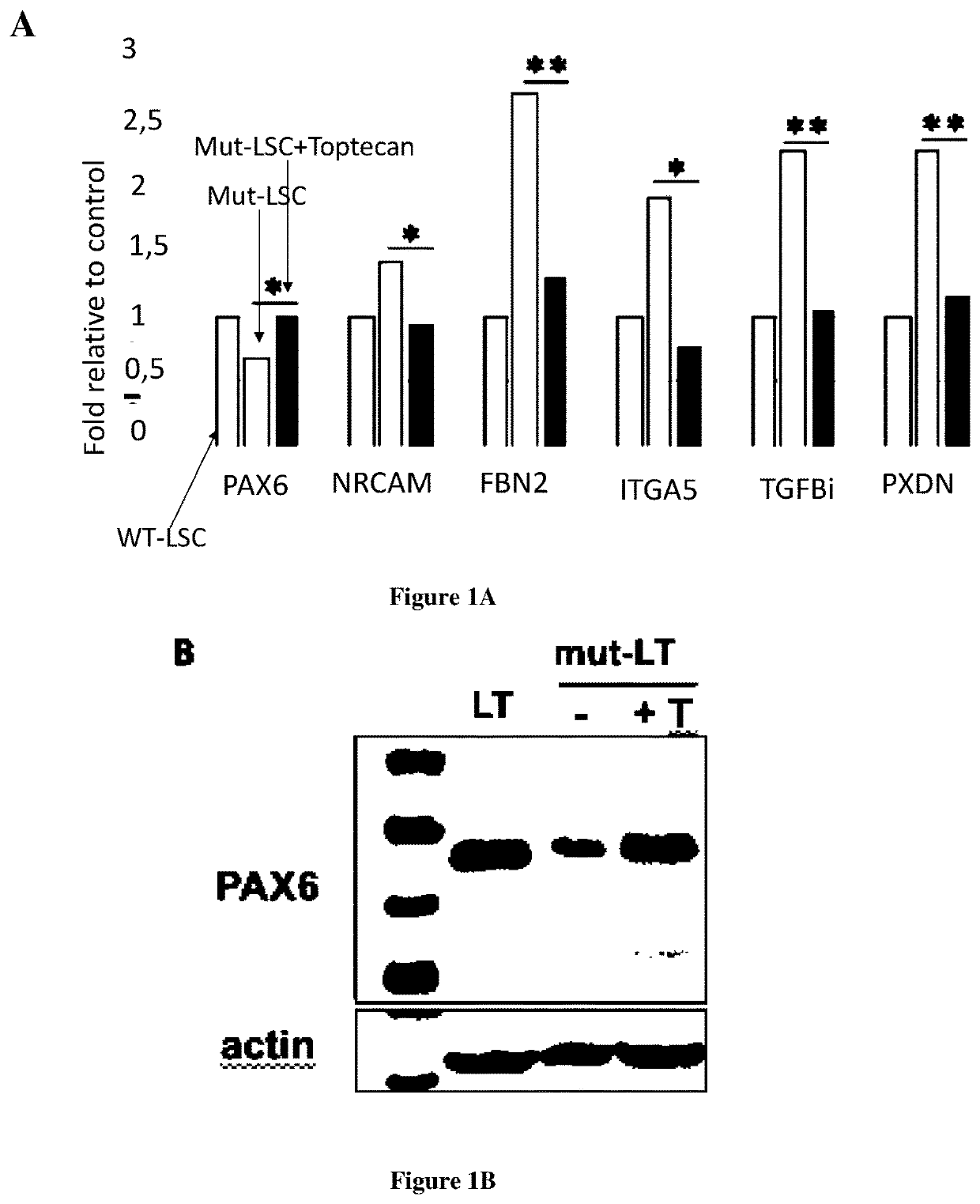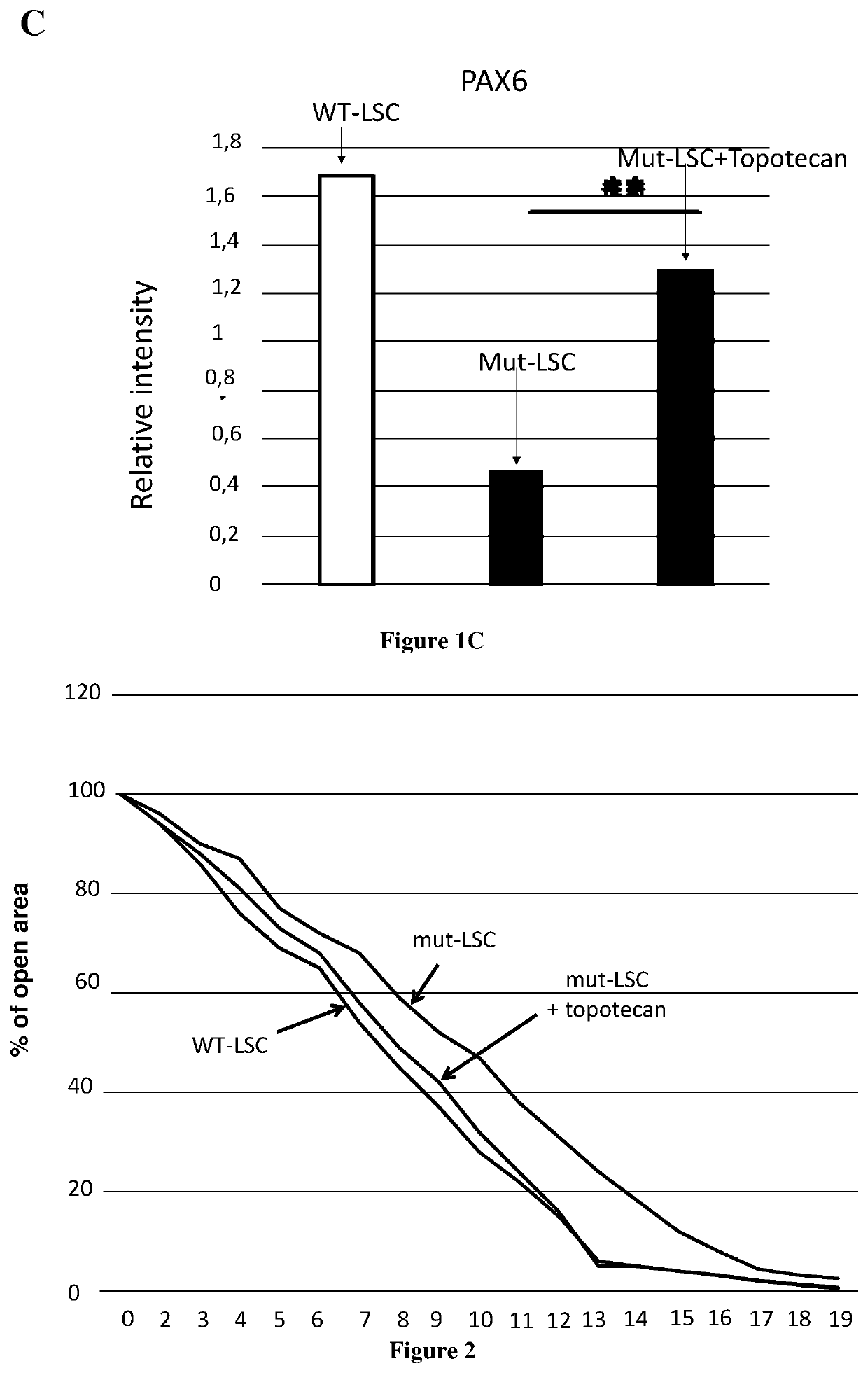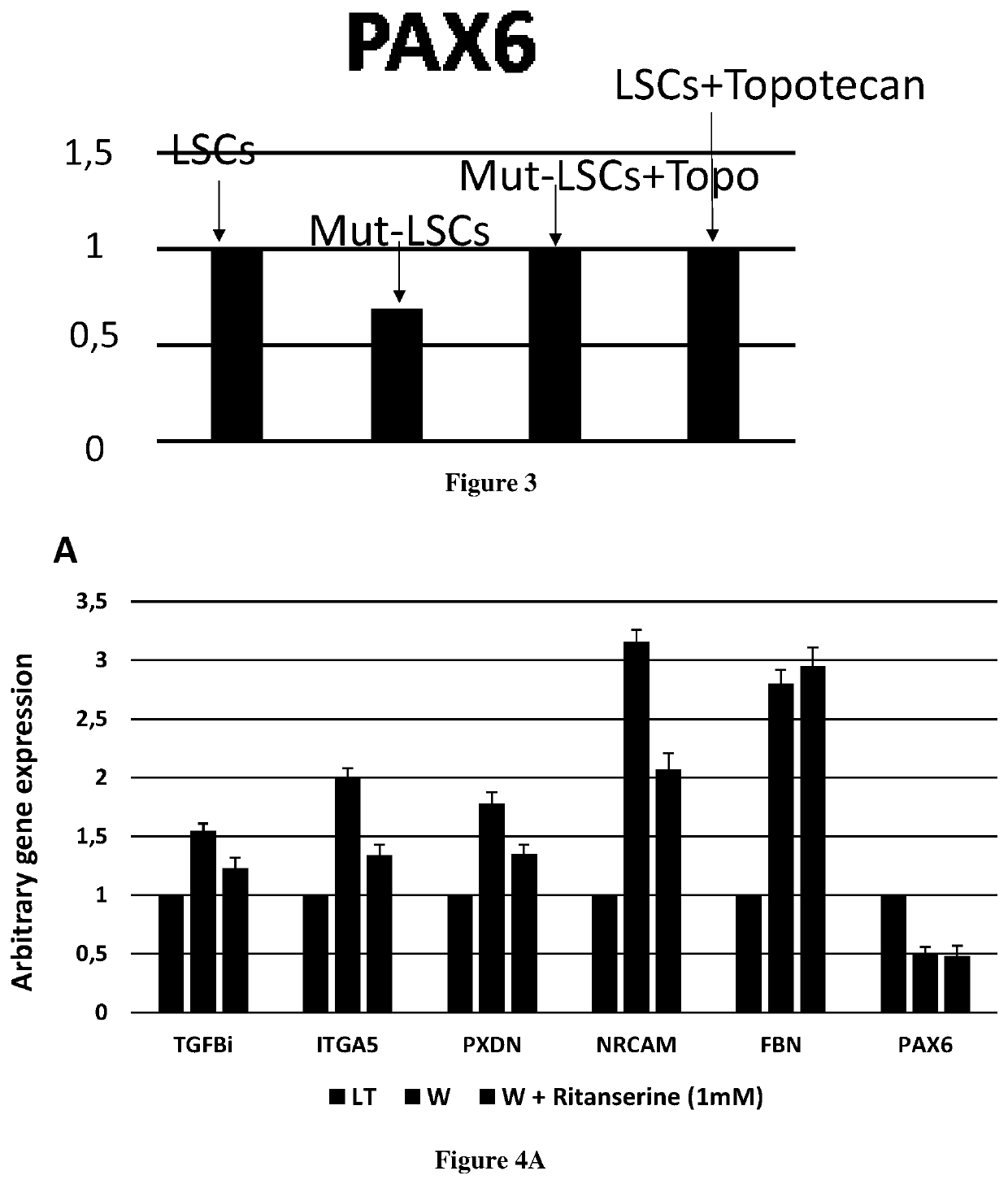Methods and compositions for treating pax6-deficiency related disease
a technology of deficiency and composition, applied in the field of medicine, can solve the problems of incomplete recapitulation and failure to complete eye formation, and achieve the effect of increasing pax6 gene and/or protein expression
- Summary
- Abstract
- Description
- Claims
- Application Information
AI Technical Summary
Benefits of technology
Problems solved by technology
Method used
Image
Examples
example
[0109]Material & Methods
[0110]Cells and culture conditions: Human mutated limbal epithelial stem cells (mut-LSCs) were obtained by genome editing (Crispr / cas9) of primary limbal stem cells, as described in Roux et al. (Roux, 2018 Stem cells). mut-LSCs and WT controls were cultured, as described earlier (Roux, 2018 Stem cells), in Keratinocyte serum-free medium (K-sfm) (Gibco™, Life Technologies), supplemented with 25 μg / mL Bovine Pituitary Extract (BPE; Gibco™, Life Technologies), 0.2 ng / mL Epidermal Growth Factor (EGF, Peprotech), 0.4 mM CaCl2, 2 mM Glutamine (Gibco™, Life Technologies) and 100 U / mL Penicillin / Streptomicin (Gibco™, Life Technologies). Routine subcultures were obtained by detaching cells with StemPro™ Accutase™ Cell Dissociation Reagent (Gibco™, Life Technologies) and replating at 2,000 cells / cm2 (T-LSCs) or 3,000 cells / cm2 (PAX6+ / − T-LSCs). All cells were negative for mycoplasma contamination (monthly tested).
[0111]Rescue experiments: Mut-LSCs were treated with eac...
PUM
| Property | Measurement | Unit |
|---|---|---|
| Composition | aaaaa | aaaaa |
Abstract
Description
Claims
Application Information
 Login to View More
Login to View More - R&D
- Intellectual Property
- Life Sciences
- Materials
- Tech Scout
- Unparalleled Data Quality
- Higher Quality Content
- 60% Fewer Hallucinations
Browse by: Latest US Patents, China's latest patents, Technical Efficacy Thesaurus, Application Domain, Technology Topic, Popular Technical Reports.
© 2025 PatSnap. All rights reserved.Legal|Privacy policy|Modern Slavery Act Transparency Statement|Sitemap|About US| Contact US: help@patsnap.com



